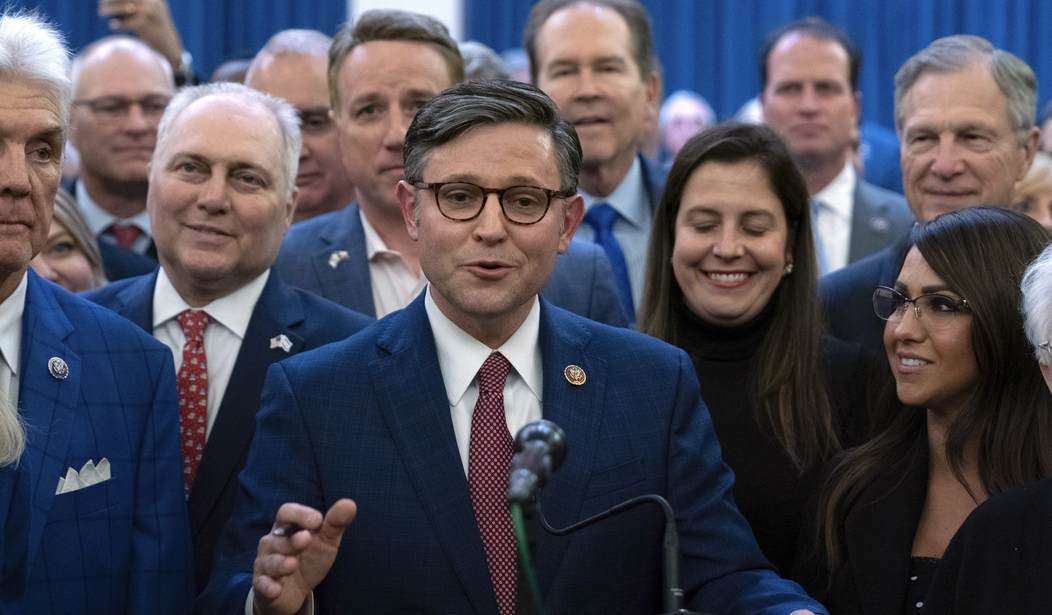And now for something totally different – my predictions for the 2024 U.S. House elections.
Prior to this column, I have focused solely on the presidential race and the Senate contests. This is because there are just so many House races – 435 of them – and many of the races have so few public polls, and the quality of those polls is often unknown to me.
But let’s look at RealClearPolitics again. RCP gives us the following relevant information. There are 201 Republican safe, likely, or leaning seats. And there are 192 such Democrat seats. The RCP number of toss-ups is at 42 seats, of which 23 are currently held by Democrats. The RCP polling average generic vote in the House is .4 percent for the Republicans. President Joe Biden’s approval rating is an unpopular 41 percent. And former President Donald Trump is up .1 percent in the average national vote over Vice President Kamala Harris.
My prediction for the presidential race is Trump will win 51 percent of the vote to Harris’ 47 percent, with the remaining 2 percent to the third-party candidates. I have based this prediction on some of the polls in average – which I label Tier 3 – and which include Atlas (the highest-ranking poll), CNBC, Fox, Gallup (which avoids head-to-heads but still can be deduced), Rasmussen, and WSJ. I also expect that Gallup’s projection of a +3 percent environment is likely.
I have also looked at three election years that involved similar political situations – 1968, 1980, and 2008 – where the incumbent party was unpopular because of a bad economy and foreign troubles, and the out-party benefitted. In 1968, the out-party (GOP) won five more House seats; in 1980, the out-party (GOP) won 34 more seats; and in 2008, the out-party (Democrats) won 21 more seats.
House races are somewhat different beasts than Senate races. Usually, there is a boom or bust cycle, and the exact numbers that are won are often determined by the (over or under) exposure of the respective parties in the House. Meaning one party wins big one year, and then a few years later, the other party rebounds. The rebound can be big or small. If it is the latter, the next successive election may continue it.
In 1964, the GOP was crushed in a House landslide because of the Goldwater debacle. In 1966, they rebounded hugely. So, in 1968, there was a bare Republican pick-up.
In 1974, the GOP was also crushed by the Watergate scandal and a terrible economy. They gained little in 1976 and 1978. So, in 1980, when Reagan won his landslide, there was a lot of exposure for the Democrats, who lost big.
In 2006, the out-party Democrats flipped the House by 31 seats in the anti-Bush, anti-Iraq war, six-year-itch landslide. So, in 2008, the Democrats only picked up 21 seats, while the overrated Barack Obama was easily elected to the presidency.
Turning to the current situation, in 2018, the Democrats won bigly, picking up 41 House seats in the backlash against a unified GOP control of the federal government. In 2020, the GOP clawed back 13 seats, despite Trump narrowly and controversially losing the presidency and the Democrats flipping the Senate. In 2022, the GOP won 10 more seats in the House, giving them a very narrow majority.
Based on this history, I am not expecting a yuge Republican victory in the House in 2024.
Let’s get back to the RCP and the national climate. The 42 toss-ups, 23 Democrat-held, will be at the center of all the action. If Trump is winning the presidency with 51 percent of the vote – and no, I am not concerned about an Iowa poll that contradicts every other piece of information we have about this election – the GOP should largely hold onto its own toss-ups, and flip the vast majority of the 23 Democrat seats, plus a small portion of other Democrat seats, usually in the lean or likely Democrat categories. A handful of other (non-toss-up) Republicans might also lose, usually because they are caught napping, the district is changing under them, or they have a scandal.
Altogether, I expect the GOP to pick up 15 to 20 seats in the 2024 election.
Now, you are probably wondering why I haven’t mentioned my beautiful, perfect election model (so far) in this column, or in my Senate predictions column? Well, as you can imagine, building, maintaining, and utilizing a big-as-a-factory, unbelievably complicated, math-heavy, scientific model, which puts all other models to shame, can be very expensive and time-consuming. So, I didn’t use it for my predictions in the Senate races, and now for most of the House races. I just couldn’t justify it.
Except I will use it in one House race. In PA – 7, I have known Ryan Mackenzie since 2006, when he was leading the (unfortunately unsuccessful) effort in Lehigh County to re-elect my old boss, Rick Santorum, to the U.S. Senate. (Santorum was un-elected by Bob Casey Jr., who has been there ever since, doing nothing.) Ryan is a good guy, and a hard worker, for whom I have volunteered for this cycle. So, I told Robby the Robot, the exceptional robot whom I built to input the precise calculations required for my model to operate, to put those calculations in for Ryan’s race, and then I pulled the lever, and after a lot of bells, whistles, smoking, and shaking, my model told me Ryan’s fate. It told me that there is a 99 percent certainty that Republican Ryan Mackenzie will topple Democrat Susan Wild in PA – 7, with 55 percent of the vote. A total Lehigh Valley landslide.
Believe it. Don’t be a science denier! And on Tuesday, get out and vote. (May the force be with us…)














Join the conversation as a VIP Member